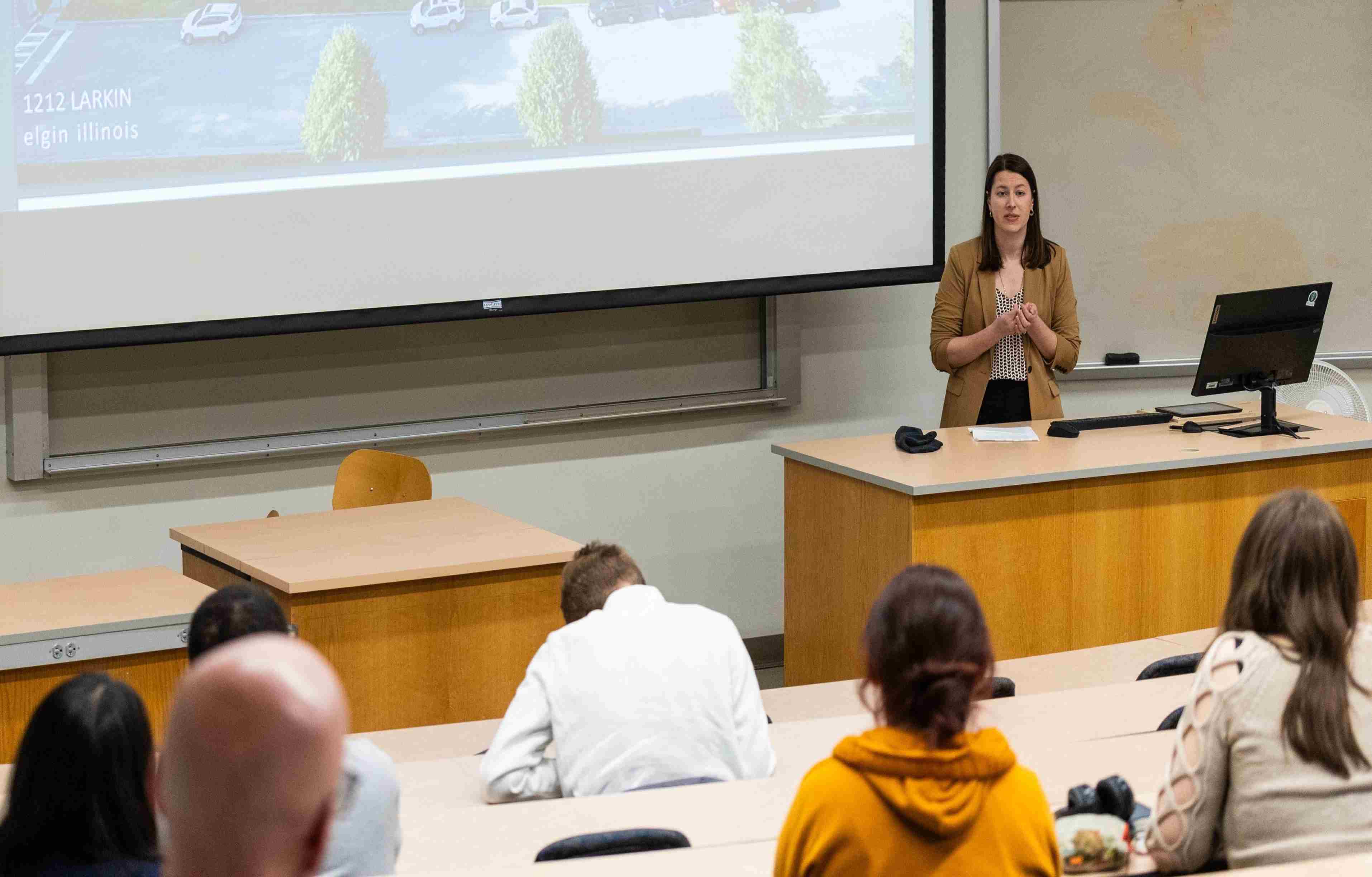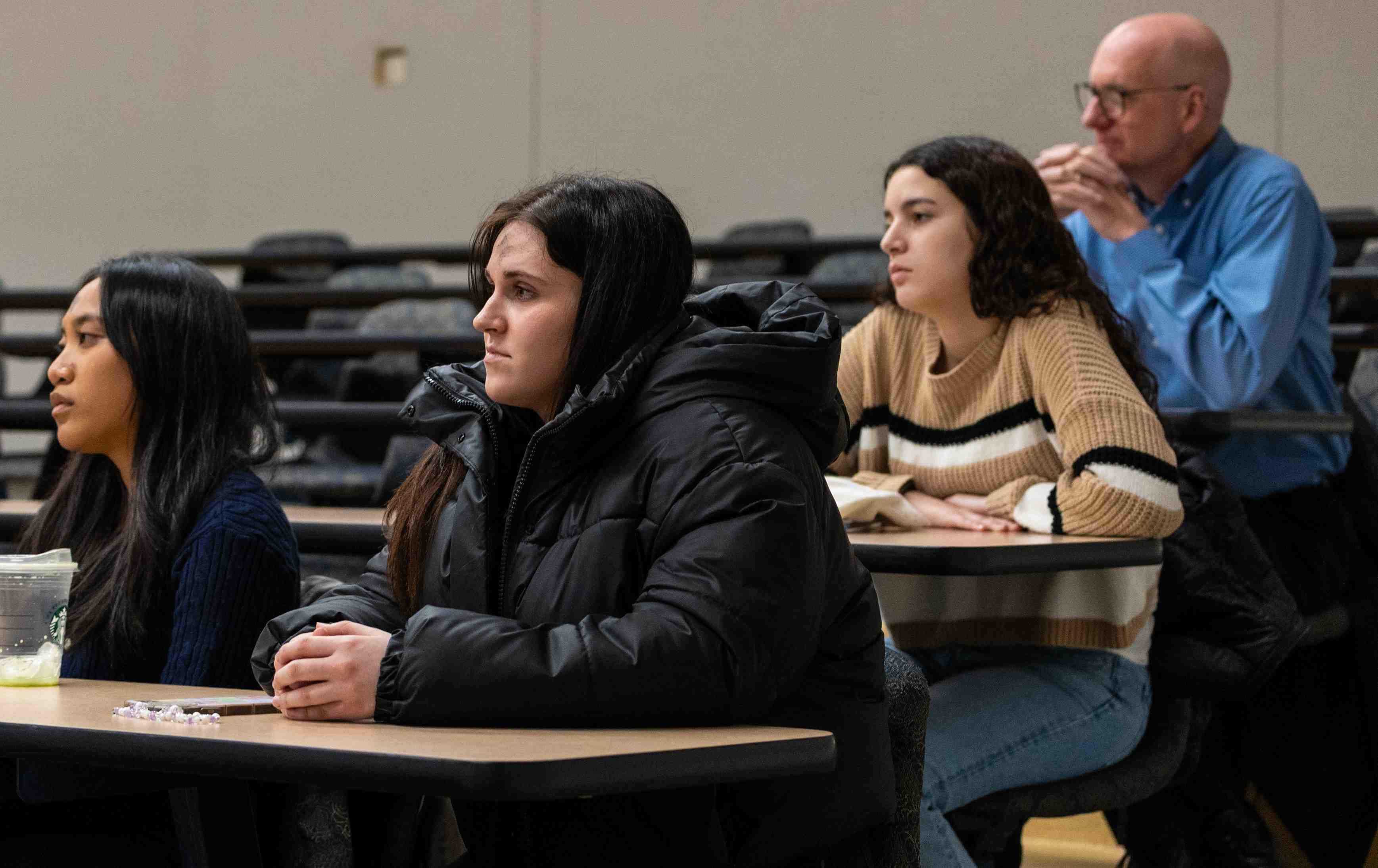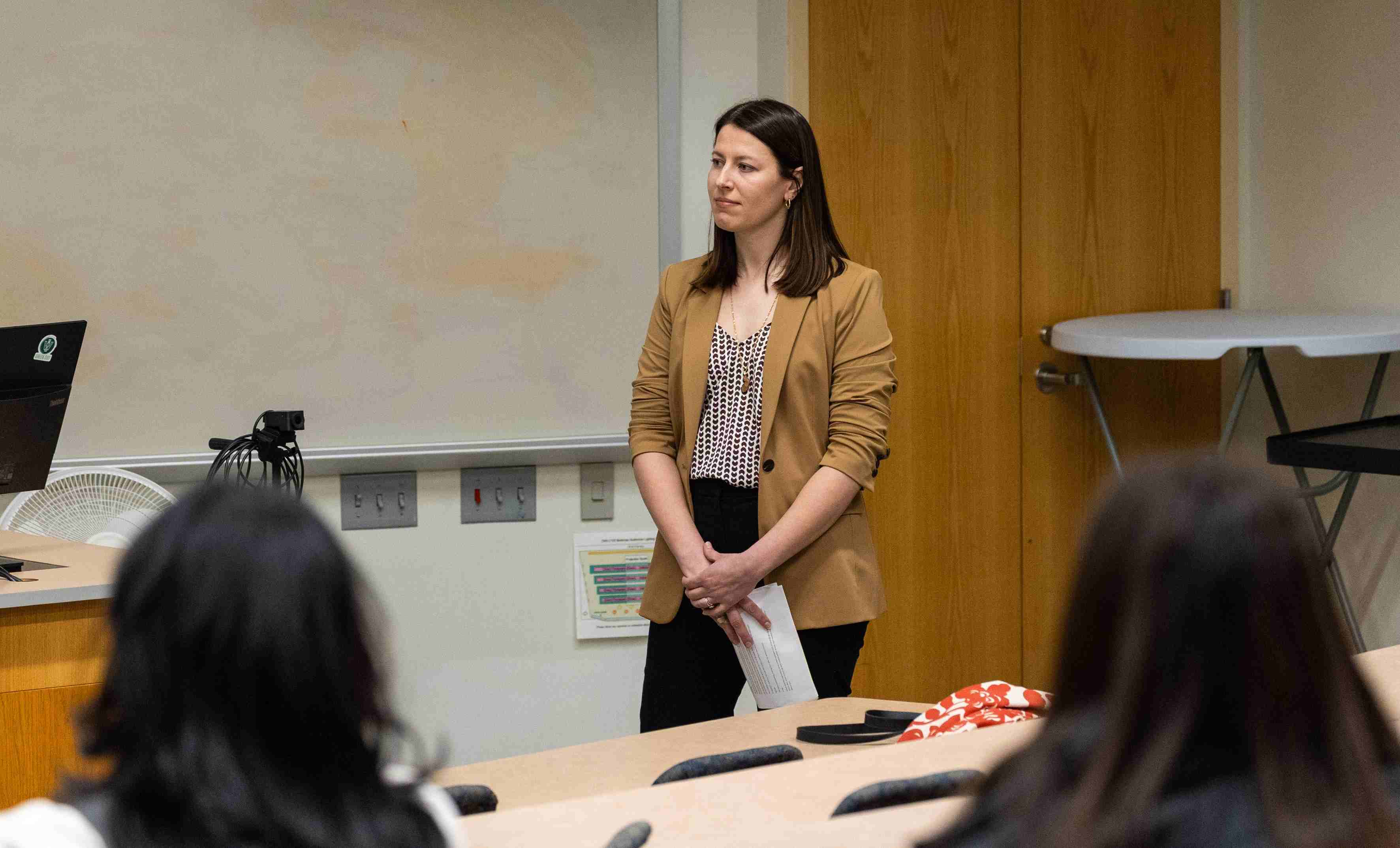2025 Gebhardt Speaker: Lindsey Haines '10
On March 5th, 2025, Illinois Wesleyan University welcomed Lindsey Haines to share
her insights on projects aimed at creating more equitable housing during a time when
many individuals in America struggle to afford safe shelter for themselves and their
families. Lindsey is dedicated to helping community members meet their basic needs,
embodying the values of the Gebhardt family, who sponsor this annual speaker series.
Her talk, titled “Building Community Through Collaboration: Driving Change Through
Housing and Community Development,” was invaluable, and we were excited to have it
as part of the 2025 Gebhardt Speaker Series.
Lindsey currently serves as the Executive Vice President at Full Circle Communities, where she has worked for nearly 13 years. In this role, she is responsible for developing, adjusting, and implementing the organization's growth strategies. Lindsey and her team have overseen the development of 1,700 units of affordable and supportive housing. Prior to her time at Full Circle, she worked with several non-profits focusing on housing and community development issues. Lindsey holds a Master of Urban Planning and Policy from the University of Illinois at Chicago. She is also an alumna of IWU, having graduated in 2010 with a bachelor's degree in both economics and political science. Lindsey has demonstrated how her education at IWU has positively impacted her career by effectively utilizing both of her majors.
During the event, Dr. Greg Shaw, a faculty member of the Political Science Department, welcomed and introduced Lindsey, highlighting the significant milestones of her work and her journey to this point.
In her talk, Lindsey began by sharing the questions she asked herself that inspired her work. She was particularly intrigued by the factors contributing to housing inequalities. Lindsey described her experience of driving through Chicago, where she could pass from one of the city's wealthiest neighborhoods to an adjacent block filled with poorly maintained houses and some of the most impoverished residents. This stark contrast is what motivates her in her efforts.

Her organization adopts an approach that sets it apart from many others in the field. Not only does her group strive to provide affordable housing to individuals from various backgrounds, but they also offer support after residents are placed in their homes. For instance, if a landlord were to evict someone due to issues like a stove fire, often resulting from accessibility barriers, her organization and its partners work to identify solutions that support residents where they’re at. Instead of taking the easy way out and kicking members out who can be difficult or have special circumstances/needs, their work aims to address the barriers that prevent individuals from escaping poverty and oppression.
Lindsey’s presentation highlighted two projects she is currently working on or has completed. These projects illustrate the story of two different cities in Chicago, each with distinct impacts and responses from their communities. In her first example, Lindsey discussed a project focused on Native Americans in Chicago. She began by explaining the complexities of this issue, noting that Chicago, as a large city, lacks a designated area for Native Americans, which many other cities may have. Additionally, the city is home to a multitude of tribes and native groups, meaning that a solution that benefits one group might not help another. She shared her experience of giving the groups a seat at the table, only to discover that the ideas and designs presented did not align with their actual needs. Lindsey emphasized that there is always a learning curve when collaborating with different groups, and she strives never to assume what they want or need. Instead, she believes in working together with them and asking questions, rather than assuming their answers.
 In discussing this example, she also addressed some of the other challenges they faced,
particularly the importance of community buy-in. With the first case, she proposed
a new building site, but discovred that the community wanted her group to add on to
an existing site. Community support was key then, but was a significant challenge
in her second project, which was quite different from the first. This housing initiative
was designed to accommodate a variety of identities while ensuring everyone had the
necessary access. However, the project faced opposition from some neighborhood residents
who held the mentality of "not in my backyard." They felt that the project would disrupt
their community and believed they should have the authority to decide who could affect
their neighborhood.
In discussing this example, she also addressed some of the other challenges they faced,
particularly the importance of community buy-in. With the first case, she proposed
a new building site, but discovred that the community wanted her group to add on to
an existing site. Community support was key then, but was a significant challenge
in her second project, which was quite different from the first. This housing initiative
was designed to accommodate a variety of identities while ensuring everyone had the
necessary access. However, the project faced opposition from some neighborhood residents
who held the mentality of "not in my backyard." They felt that the project would disrupt
their community and believed they should have the authority to decide who could affect
their neighborhood.
Lindsey explained how she navigates situations like this, recognizing that such opposition is not uncommon in similar projects and organizations. She highlighted the importance of understanding for whom she is building. In the case of the Native American housing project, she listened to the community she aimed to serve. However, for the second project, she realized that the housing was not meant for those protesting against it. Additionally, she acknowledged that those opposed may be more concerned about maintaining their own power and authority within the community than about genuine concern for their neighborhood.
Lindsey shared that projects like these can be challenging, but she keeps reminding herself of her purpose and the positive impact she is striving to create.
 After her presentation, Lindsey opened the floor for questions from the audience,
who posed a variety of inquiries. One question asked how long it typically takes to
complete a project. Lindsey responded that it can take anywhere from three to eight
years, depending on the complexity of the project and the level of pushback encountered.
She understands that it shouldn't take eight years to implement these projects and
recognizes that the timeline is not fast enough to address the growing housing crisis.
However, she believes in taking on these large-scale projects until she has the opportunity
to implement more effective solutions.
After her presentation, Lindsey opened the floor for questions from the audience,
who posed a variety of inquiries. One question asked how long it typically takes to
complete a project. Lindsey responded that it can take anywhere from three to eight
years, depending on the complexity of the project and the level of pushback encountered.
She understands that it shouldn't take eight years to implement these projects and
recognizes that the timeline is not fast enough to address the growing housing crisis.
However, she believes in taking on these large-scale projects until she has the opportunity
to implement more effective solutions.
Another question raised was about the impact of expanding and diversifying decision-making roles on the stress and complexity of a project. Lindsey explained that it is a push-and-pull dynamic. At a minimum, many individuals simply want to be heard. She understands that everyone has different needs, and while the diversity of the group adds valuable feedback to the project, it also introduces additional factors to consider.
Lindsey's work is a source of pride for our university. Alumni like her are truly making a difference in their communities. Although she faces challenges in her career, particularly in addressing the housing crisis, she remains committed to her mission and will continue striving to make a positive impact.
By Brady Poisal '27